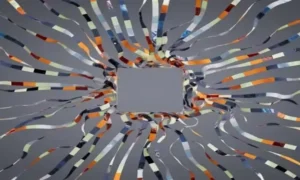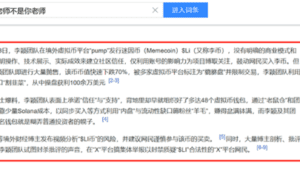More companies are being confronted by the dilemma that arises when they have to decide between the reusable and disposable forms of packaging to use. Both alternatives exist in order to serve the basic aims of preserving and supplying products, but their differences are enormous as far as cost structure, environmental impact, and consequences of their operation.
This article will provide an in-depth cost-benefit analysis of reusable packing and disposable solutions in order to assist businesses in making intelligent decisions.
Two Packaging Approaches and What is The Difference
Reusable plastic packaging undergoes numerous uses during its lifetime. Such containers from a plastic container supplier are of high-quality and durable plastic, used in such a system where the container can be returned, cleaned, and reused.
On the contrary, disposable packaging composed of recycled plastic is set to be used once. It can be made of post-consumer or post-industrial recycled plastics, although this is not always reutilised.
Lifecycle is the major difference. Although there will be a larger upfront cost, reusable plastic packaging is worth the investment since it is reused. Plastic disposable packaging made of recycled plastic is cheap in the short term, but more costly in terms of recurring expenses and involves more waste per shipment.
The Cost Factors to Consider
The cost analysis of using reusable packing and recycled plastic disposable packaging requires more than the purchase price.
Initial Investment Vs Continuous Acquisition
Reusable plastic containers are more costly than others. The cost per use, however, falls dramatically with use since they can be used many times. Recycled plastic disposable packaging costs less per unit; however, it leads to increased costs as a result of its sole usage.
Reverse Logistics
The return system is one of the major packaging cost factors of reusable packaging. Reusing by collecting, transporting, and cleaning the reusable plastic containers is quite complex and expensive, particularly over long distances.
Space and Storage
When not making use of them, reusable plastic packaging requires storage facilities. Nestable or collapsible containers are some, though this does not eliminate the need for warehousing.
Waste and Disposal Handling
Disposable packaging of plastic of recyclable materials also needs to be handled. Although it can be recycled, waste management is a costly issue; sorting, gathering, and transportation to recycling centres.
Operational Benefits and Drawbacks
The packaging cost analysis and strategy revolves around operational efficiency, and reusable and disposable solutions have both advantages and disadvantages in the case of plastic. A target of 50% for reusable packaging could drastically reduce CO2 emissions and water consumption.
Benefits of Reusable Packaging Plastic
- Durability
- Efficiency
- Professional Appearance
Sources of Disadvantages of Reusable Plastic Packaging
- Monitoring
- Risk of Loss
- Cleaning/ Maintenance
The Benefits of Recycled Plastic Disposable Packaging
- Easy to deal with
- Adaptability
- No Cleaning
Cons of Recycled Disposable Packaging of Plastic
- Sustainable Costs: New materials are needed with each shipment process, thus adding up to considerable long-run costs.
- Environmental Impact: Out of the landfills, no more out of the oceans, despite being recycled, the everyday usage and reuse of plastic still end up in the waste cycle.
- Structural Weakness: Due to the preference of people towards getting rid of the package, it is possible to encounter cases of packages that are thinner and less protective than packages that can be used multiple times, which puts the product in danger of being damaged.
The Sustainability Factor
The packaging has a significant role as sustainability is a leading strategic focus of various organizations nowadays.
Reusable Plastic Packaging
Well-managed reusable plastic packaging, such as that from Utz, results in an extreme reduction in waste and emissions. Every time a material is reused, a material is postponed in being manufactured and resources are saved, as well as other materials are not dumped in landfills.
Disposable Packaging in Recycled Plastic
The reuse of plastic packaging is a better option than virgin plastic, but it also does not have unlimited opportunities. Each use necessitates a new manufacture and use of energy, and the life is far shorter. Moreover, recycling plastic reduces its quality after some time, making even recycled plastic end up in garbage sites after some repetitions.
Making the Right Decision for Your Business
Business needs are all unique, and the appropriate packing solution might only be determined by the complexity of the supply chain, the number of shipments to be made, customer demands, and environmental commitments.
Use Reusable Plastic Packaging when:
- Your supply chain is closed, and when it comes to packaging, there can be consistent returns.
- Protection of products is important, and you require packaging that will be long-lasting.
- You seek to have greater sustainability and lower periodic packaging costs.
- You have container storage and logistics facilities.
Select Recycled Plastic Disposable Packaging when:
- You sell into one-way destinations that have a low possibility of returns.
- You have different sizes, weights, or frequencies in your shipments.
- You wish to have the option and a low start-up investment.
- You do not have the infrastructure to deal with a reusable system.
A hybrid approach works well with some companies, where they reuse plastic packaging on a controlled B2B or short-loop basis, and have recycled plastic disposable packaging on face-to-face or long-haul deliveries.
In Conclusion
The decision of whether to use reusable plastic or recycled plastic, disposable packaging is dependent on the nature of your business, your packaging cost analysis, and your sustainability objectives. Reverse logistics, the necessity and upfront reusable plastic investment are required with long-term savings and sustainability gains. The disposable packaging made of recycled plastic is easy to use and cheap in the short run, but translates into continued costs and waste.



































